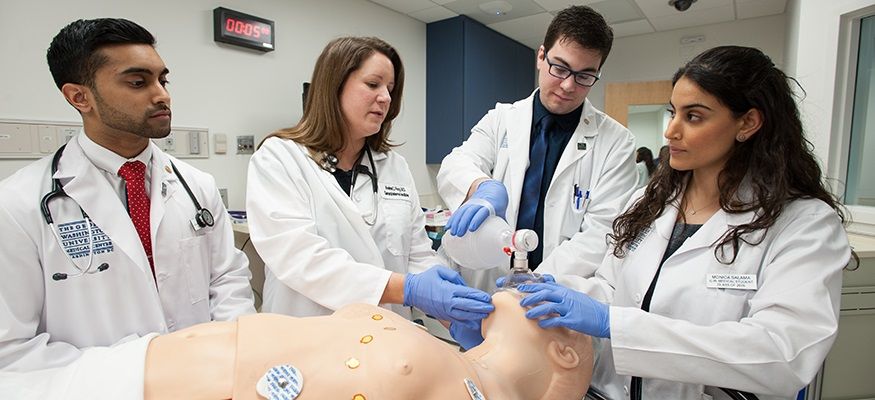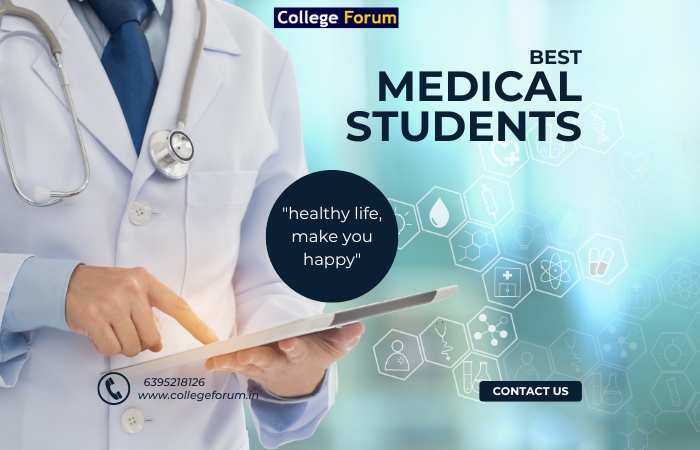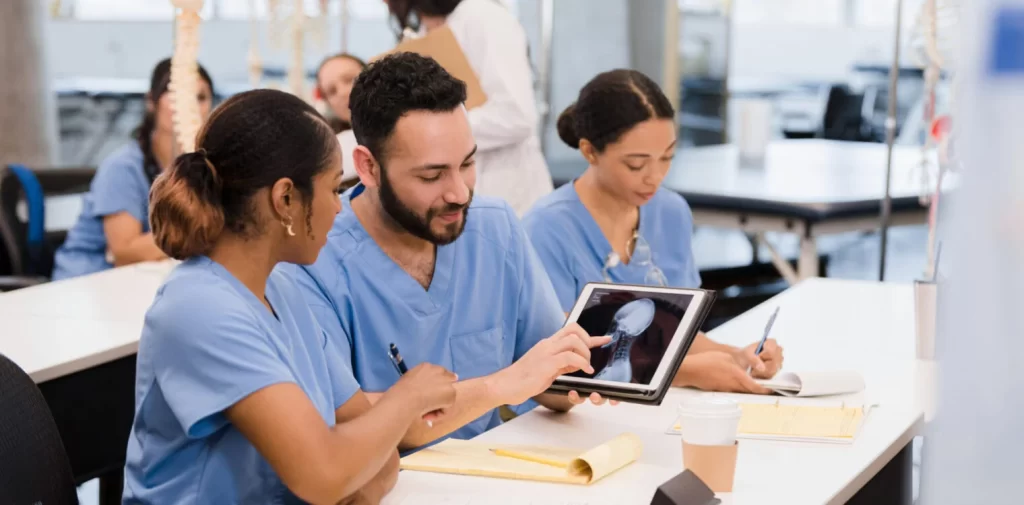Introduction
Anatomy and physiology form the base of any clinical education, encompassing the essential knowledge basis through medical students and beyond. It is this knowledge about the human body as a structural arrangement (anatomy) and functional operations (physiology) that lays down the indispensable basis of diagnosis, treatment, and prevention of diseases. In fact, the article goes on to express exactly how important anatomy and physiology are to a student’s whole learning and practice journey.
Why Anatomy is Significant to Medical Students
Anatomy is the study of the physical structure of any organism, and for medical students, it forms the very foundation supporting their understanding of a wide range of different medical disciplines. The following key points highlight this importance:
1. Understanding Body Structures
This leads to acquiring a comprehensive knowledge of complex structures in the human body. Anatomy will be crucial during the examination of patients, interpreting medical images, or performing surgery for a medical student. A good grasp of anatomical nomenclature and how all structures relate to each other allows a medical student to communicate freely with colleagues and patients.
2. Guiding Clinical Practice
Anatomy directly informs clinical practice. Medical students need to understand where organs, muscles, and nerves are so that will form the basis of their decision while conducting examinations and interventions. For instance, medical students are supposed to comprehend the anatomy of the cardiovascular system while diagnosing heart conditions or while doing catheterizations among others.
3. Basis for Other Disciplines
Anatomy is the base to all other medical sciences; it has a deepening of knowledge about pathology and pharmacology, and also with application in the surgery discipline. A student who masters anatomy will have an easier way into highly complex subjects in these other sciences, providing even further concrete medical knowledge.
4. Improved Diagnostic Capacities
With anatomy knowledge, diagnostic ability is enhanced since it helps students relate clinical signs and symptoms to the related anatomical structures. For instance, if a student understands the anatomical landmarks of the abdomen, he or she will be more likely to diagnose appendicitis or pancreatitis in particular.

Physiology in the Medical Education
Physiology is the study of body functions and part functions. For medical students, it is as important as the understanding of the different body systems functioning and what the whole program is all about. This is why physiology is so important:
1. Understanding Body Functions
For instance, they must understand how the body works to know when something has gone wrong. Physiology is concerned with the mechanics of processes such as respiration, circulation, digestion, and metabolism. It’s basic to diagnosis as well as treatment selection.
2. Anatomy and Function Tell Each Other
With the introduction of physiology, the anatomical structural relation would then be accompanied by its functions. In this way, a medical student would appreciate how there is interrelation between form and function. Understand from how lung structure relates to gas exchange which is essential for a medical student to be in good stead when handling respiratory diseases.
3. Application in Clinical Situations
The physiologic principles are taught to apply during practice. For instance, knowing what happens physiologically during exercise may teach the students to look out for signs of cardiovascular disease during clinical examinations. This knowledge will help them devise appropriate treatment plans for individual patients.
4. Pharmacology Basis
Physiology serves as the underlying basis for pharmacology because the drugs’ interactions in the body must be understood well by a medical student. Students can provide prior anticipation of how a particular drug might interact with a patient, and, based on physiological processes, will be able to make an appropriate decision over prescribing the treatment to the patient.

Integration of Anatomy and Physiology in Medical Curriculum
Anatomy and physiology are important to be integrated within one another because they complement each other in providing a holistic understanding of the human body, thereby making learning and practice easier. They are incorporated into curricula of medical education in the following ways:
1. Curriculum Structure
Many medical schools design their curricula with concurrent courses in anatomy and physiology to be taken side by side. This will allow medical students to relate the structure of the body directly to its functions, thus imbedding knowledge within their memory.
2. Clinical Skills Development
The clinical skills education of medical students combines anatomical knowledge with a physiological understanding. Taking an example from a physical examination, where anatomical assessment of an organ walks hand in hand with functional assessment, such as heart sounds and their evaluation as understood anatomically by anatomy as pertinent to forming a student’s clinical competency.
3. Technology Use
Technology in this field has heavily improved the way they learn, including virtual anatomy software and simulation. Virtual anatomy software allows for the exploratory study of anatomical structures while applying physiological concepts simultaneously, which creates a better understanding.
4. Team-Based Learning
Many medical schools cultivate a learning environment that calls for teamwork by students in the diagnosis of cases that necessitate both anatomical and physiological knowledge. This propels peer-to-peer learning and gives them a more panoramic view of how all these subjects are interconnected.
Challenges of Medical Students
Despite the very great necessity of anatomy and physiology, challenges most medical students face include:
1. Complexity of Material
The human body is very complex, and this amount of data can be frustrating for medical students. It requires a lot of commitment and strategic study time to learn detailed anatomical structures and physiological processes.
2. Time Limitations
Medical students typically maintain very demanding schedules and considerable coursework besides clinical rotation. It becomes pretty difficult to find adequate time to study in depth anatomy and physiology.
3. Retention of Knowledge
Such knowledge acquired by a medical student in anatomy and physiology courses is sometimes very hard to store in the mind of the student. In most instances, the student would pass the exam but forget much after six months. The idea of retention for long would depend on continued reinforcement and practical manifestation.
4. Translation into Clinical Practice
It is challenging for the medical student after leaving his foundation to integrate anatomical and physiological knowledge into practical clinical application. This is, therefore, a step forward toward bridging the gap between theoretical knowledge and practical application-the very crux of development to become a competent health provider.
Anatomy and Physiology: Strategies for Success
An anatomy and physiology student should, therefore, employ the following strategies to succeed:
1. Active Learning Techniques
Active learning techniques such as groups of discussions, quizzes, and even hands-on dissections can help students remember material better. Opportunities in interactive learning must be embraced by medical students. The more they are able to engage actively with the material, the better they will understand and retain it.
2. Use visual aids and resources
Using diagrams, models, as well as online resources, it is easy to visualize any complex structures and processes for a medical student. Most medical students also found that their own illustrations or flashcards helped them remember a lot of material.
3. Frequency of Review
Material needs to be refreshed constantly to keep it. The medical student needs to make some specific time during the week to cover anatomy and physiology material and make sure that he or she remains abreast of what he or she needs to memorize for training purposes.
4. Seeking Help and Teamwork
Medical students should not fear to ask others, even colleagues, mentors or instructors for help. Group study is a good way to get other perspectives and make complex concepts clearer.
5. Contextualization
The knowledge acquired should be linked to clinical practice. Medical students should therefore find opportunities to observe clinical procedures and correlate their anatomical and physiological knowledge with real scenarios for application. Such practice will reinforce their learning and challenge their futures in the profession.
Conclusion
Anatomy and physiology forms the base of medical education as it gives medical students the all-important tool of understanding the human body and its functions. Understanding such subjects clearly is thus vital in the clinical setting because it helps students make proper diagnoses and treat patients more effectively. A good grasp of anatomy and physiology, with an understanding of the facts and a suitable study strategy, helps medical students tackle the challenges of school to become competent healthcare professionals ready to make their mark in the field of medicine. It is only when anatomy and physiology are mastered that there will be adequate positioning of medical students to benefit it in all aspects of their practice and, consequently, in the production of excellent patient care at its finest throughout their careers.









